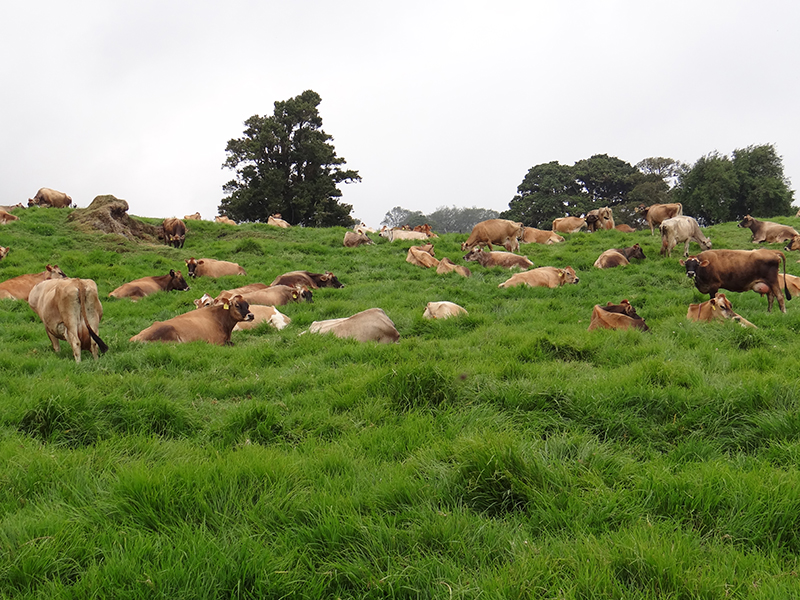
A new book summarizes current knowledge about common diseases in dairy cows, using a systems biology approach.
Half of all dairy cows in the world are culled from their herds each year because of a series of diseases prone to affecting them just after they calve.
But a University of Alberta researcher says a relatively new approach in science-called systems biology-could help solve those health issues. So, he edited and co-wrote a book he believes is the first to use a systems biology approach that summarizes current knowledge about those diseases in dairy cows.
Systems biology looks at the interactions among many different elements of a system, such as those related to genes, proteins or metabolites. The approach is ideal for dairy cow research because there is so much new knowledge available about post-calving diseases that scientists need a new method to study and interpret how it all fits together, said Burim Ametaj, a professor of animal physiology and immunology.
"There is a new group of sciences called the 'omic' sciences, as well as bioinformatics and even math and physics, which we need to use in our research approach to better understand those diseases," said Ametaj, part of the dairy research group in the Department of Agricultural, Food and Nutritional Science.
The 'omics' sciences include genomics, transcriptomics, proteomics and metabolomics-the study of genes, RNA molecules, proteins and metabolites, respectively. Each of these sciences has benefited in the last decade from more advanced instrumentation that allows researchers to measure what is occurring globally instead of just focusing on one isolated element, said Ametaj.
Yet, he said, a systems biology approach requires even more than just 'omics' sciences, which are an inventory of all genes, mRNA molecules, proteins and metabolites of a cell or an entire animal body.
That inventory does not help understand disease, he said. Instead, scientists need to look at interactions among all those elements to go to the roots of causes and develop new prevention strategies. A systems biology approach to disease is quite different than a traditional approach, he said.
"Until now in biological science, we have used a reductionist approach or philosophy to studying disease process, taking a few components (a gene, protein or metabolite) of a cell or an organ and studying them isolated from the entire organism.
"But today, with more sophisticated instruments, we can measure, for example, more than 4,000 metabolites, 25,000 genes and the same number of proteins. If we can measure their interactions with each other, we will be able to unfold the reason why cows become sick and develop early treatments that can prevent the disease from occurring.
"So, we need more sophisticated means for studying diseases. We need to create teams of scientists that include biologists, animal health scientists, biostatisticians, computer scientists, physicists, mathematicians and others. We need a new approach, from multiple angles, multiple layers, multiple sciences and instruments."
Ametaj believes that the book will stimulate that activity, while also "putting our university at the forefront in this new area of dairy cow health."
The book brings together the most current knowledge about the most common diseases that affect dairy cows after birth. These include metritis, mastitis, laminitis, ketosis, retained placenta, rumen acidosis, milk fever (infections of the uterus, mammary, hooves, metabolism, placenta, stomachs and vaginal tract) as well as gastrointestinal microbiota and immunity. The book also discusses several myths that have been established during the last century in the animal health sciences, and the need to revisit those and develop new paradigms.
Additionally, every one of the book's authors (drawn from AFNS' dairy group, elsewhere in Canada, the United States, the United Kingdom, and Italy) pose important questions designed to trigger new research that would involve multiple sciences.
"We cannot solve dairy cow problems with just one or two sciences," says Ametaj. "The entire biological sciences are changing. It's a new era."
Periparturient Diseases of Dairy Cows: A Systems Biology Approach is published as a hardcover and an ebook by Springer International Publishing.